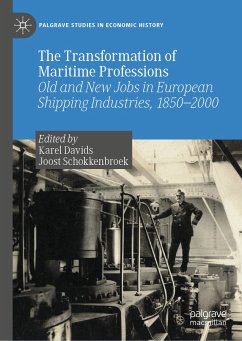This book deals with the economic impact of technological changes and the rise of passenger shipping on social relations on board and ashore in European shipping industries between c.1850 and 2000. The changes in motive power, communication techniques and positioning technologies and the rise of passenger shipping went together with the creation of new tasks and functions and the marginalization or disappearance of traditional jobs and skills. This book presents case-studies on changes in different maritime professions between the middle of the nineteenth century and the end of the twentieth century, covering the shipping industries of a variety of seafaring countries in Europe. The subjects include changes in maritime labour at large, changes in specific groups of deck, catering or engine room personnel, such as captains, cooks, catering personnel, engineers, or radio-operators. A number of chapters employ a prosopographical or micro-historical approach, while others applya spatial perspective, analyze business records, materials from professional associations or distil information from large sets of quantitative data. This book will be of interest to academics and students of economic history, maritime and labour history.
Karel Davids is Professor Emeritus of Economic and Social History at the Vrije Universiteit Amsterdam, the Netherlands. He has published and taught on economic and social history, maritime history, the history of technology and global history. Joost Schokkenbroek has been Executive Director of the Vancouver Maritime Museum since July 2017. Prior to this he was affiliated with The Kendall Whaling Museum in the USA (1988-1990) and Het Scheepvaartmuseum (The Dutch National Maritime Museum) in Amsterdam (1991-2017), where he worked as Chief Curator, in combination with a Professorship of Maritime History and Maritime Heritage at Vrije Universiteit in Amsterdam.
Dieser Download kann aus rechtlichen Gründen nur mit Rechnungsadresse in A, B, BG, CY, CZ, D, DK, EW, E, FIN, F, GR, HR, H, IRL, I, LT, L, LR, M, NL, PL, P, R, S, SLO, SK ausgeliefert werden.









